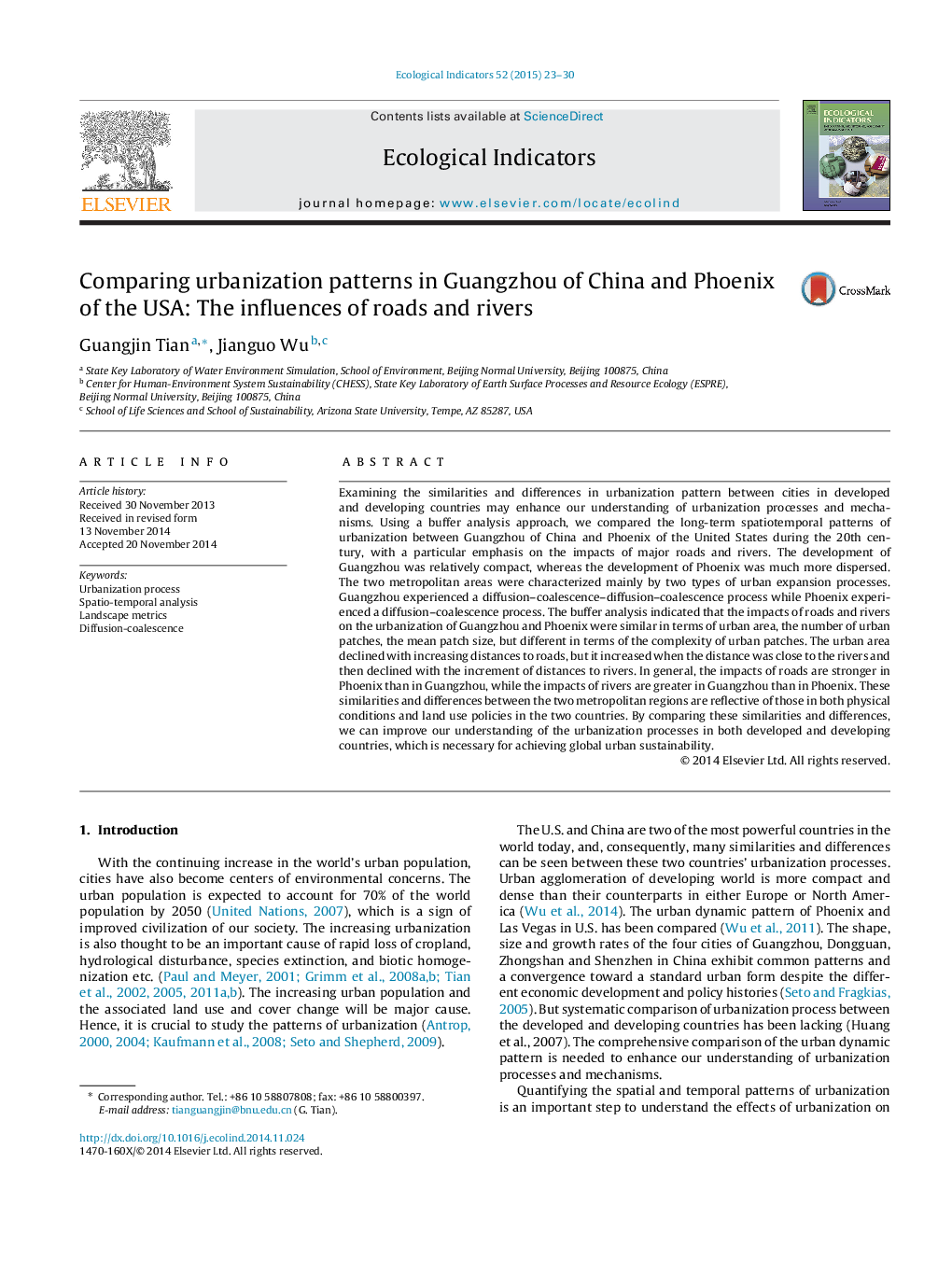| Article ID | Journal | Published Year | Pages | File Type |
|---|---|---|---|---|
| 6294497 | Ecological Indicators | 2015 | 8 Pages |
Abstract
Examining the similarities and differences in urbanization pattern between cities in developed and developing countries may enhance our understanding of urbanization processes and mechanisms. Using a buffer analysis approach, we compared the long-term spatiotemporal patterns of urbanization between Guangzhou of China and Phoenix of the United States during the 20th century, with a particular emphasis on the impacts of major roads and rivers. The development of Guangzhou was relatively compact, whereas the development of Phoenix was much more dispersed. The two metropolitan areas were characterized mainly by two types of urban expansion processes. Guangzhou experienced a diffusion-coalescence-diffusion-coalescence process while Phoenix experienced a diffusion-coalescence process. The buffer analysis indicated that the impacts of roads and rivers on the urbanization of Guangzhou and Phoenix were similar in terms of urban area, the number of urban patches, the mean patch size, but different in terms of the complexity of urban patches. The urban area declined with increasing distances to roads, but it increased when the distance was close to the rivers and then declined with the increment of distances to rivers. In general, the impacts of roads are stronger in Phoenix than in Guangzhou, while the impacts of rivers are greater in Guangzhou than in Phoenix. These similarities and differences between the two metropolitan regions are reflective of those in both physical conditions and land use policies in the two countries. By comparing these similarities and differences, we can improve our understanding of the urbanization processes in both developed and developing countries, which is necessary for achieving global urban sustainability.
Related Topics
Life Sciences
Agricultural and Biological Sciences
Ecology, Evolution, Behavior and Systematics
Authors
Guangjin Tian, Jianguo Wu,
